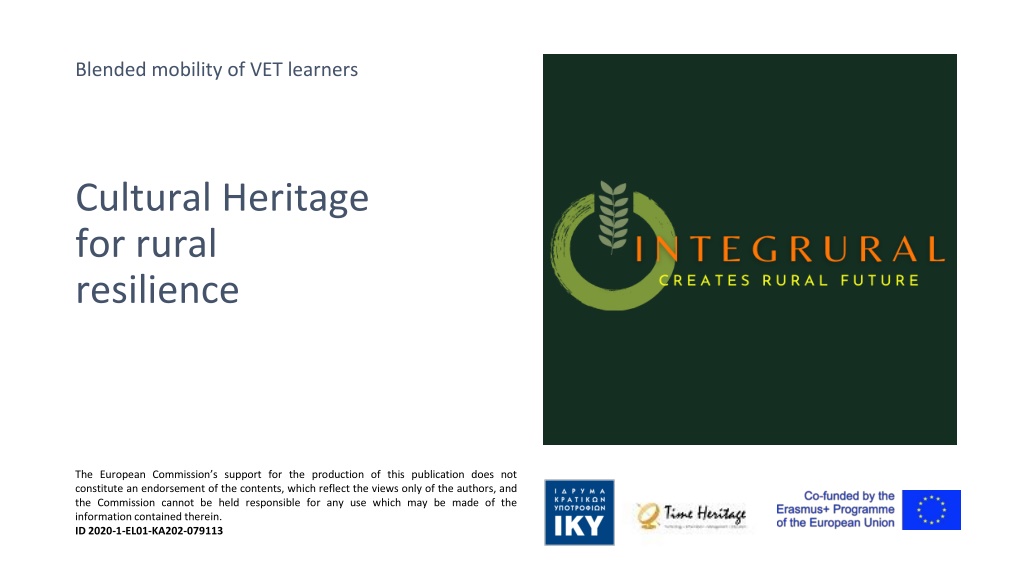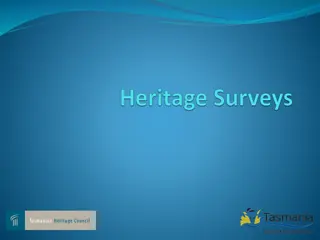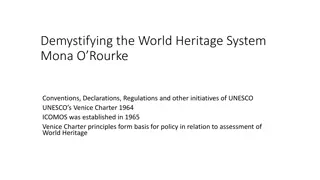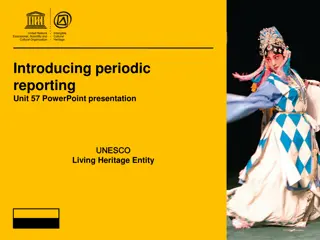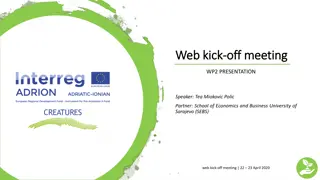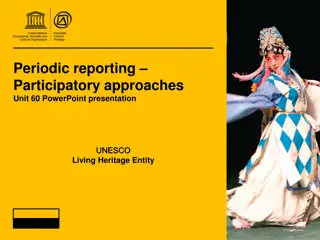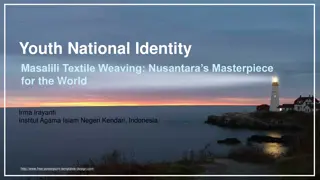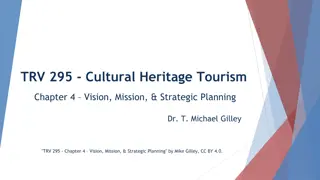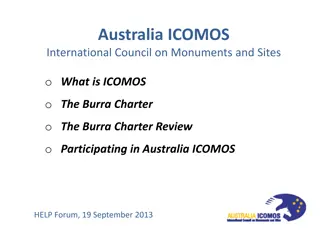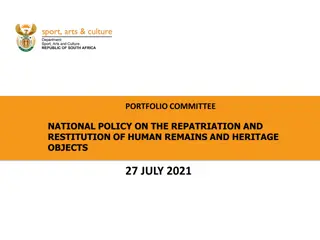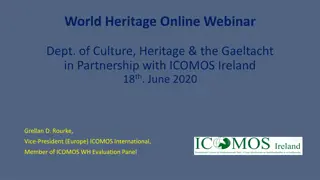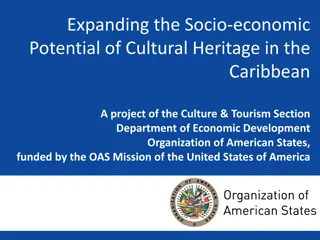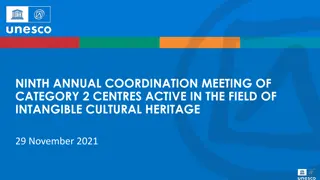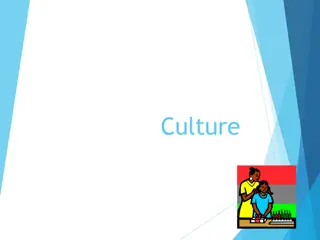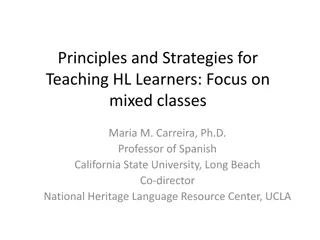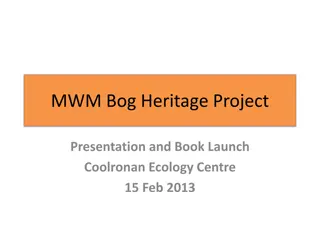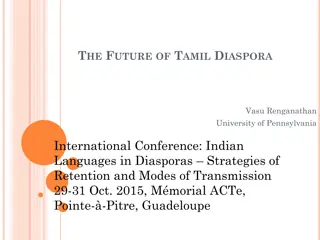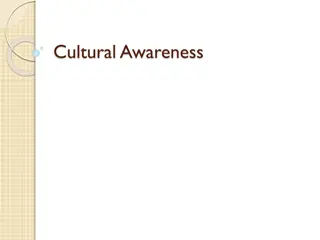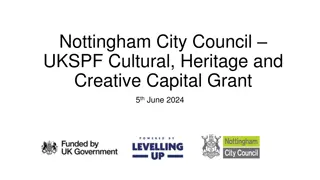Understanding Cultural Heritage: A Comprehensive Overview
Cultural heritage encompasses tangible and intangible aspects passed on through generations, shaping identities and preserving human experience. This publication explores the significance of cultural heritage in different contexts and highlights its preservation, enhancement, and economic potential.
Download Presentation

Please find below an Image/Link to download the presentation.
The content on the website is provided AS IS for your information and personal use only. It may not be sold, licensed, or shared on other websites without obtaining consent from the author. Download presentation by click this link. If you encounter any issues during the download, it is possible that the publisher has removed the file from their server.
E N D
Presentation Transcript
Blended mobility of VET learners Cultural Heritage for rural resilience The European Commission s support for the production of this publication does not constitute an endorsement of the contents, which reflect the views only of the authors, and the Commission cannot be held responsible for any use which may be made of the informationcontainedtherein. ID 2020-1-EL01-KA202-079113
What is Cultural Heritage? 1 Tangible and Intangible Cultural Heritage 2 Key Points Key Points The relation between Cultural Heritage and the Envirnoment 3 Cultural Heritage Valorisation 4 Cultural Heritage Enhancement 5 Income generating activities related to Cultural Heritage 6
Cultural heritage may be defined as the entire corpus of material signs - either artistic or symbolic - handed on by the past to each culture and, therefore, to the whole of humankind. As a constituent part of the affirmation and enrichment of cultural identities, as a legacy belonging to all humankind, the cultural heritage gives each particular place its recognizable features and is the storehouse of human experience. The preservation and the presentation of the cultural heritage are therefore a corner-stone of any cultural policy. 1. Defining Cultural Heritage
1. The cultural heritage should be considered both in time and in space. 2. First, it no longer stops at the dawn of the nineteenth century but now also embraces the records left behind by the twentieth century. 3. Second, the aim is not only to preserve increasingly numerous items of cultural property but also to safeguard complexes which go far beyond single large monuments or individual buildings. 4. The idea of the heritage has now been broadened to include both the human and the natural environment, both architectural complexes and archaeological sites, not only the rural heritage and the countryside but also the urban, technical or industrial heritage, industrial design and street furniture. 2. Categories of Cultural Heritage: Tangible cultural heritage
Intangible cultural heritage covers the non- physical cultural heritage, which includes the signs and symbols passed on by oral transmission, artistic and literary forms of expression, languages, ways of life, myths, beliefs and rituals, value systems and traditional knowledge and know-how. It is the heritage controlled mainly by communities and not by state authorities. 3. Categories of Cultural Heritage: Intangible cultural heritage
Cultural heritage assets (monuments, historic buildings, archaeological remains) are often intrinsically connected to their surrounding natural environment. Therefore they are jointly protected by national and international conventions and programmes. Furthermore, environmental factors (pollution, seismic activity, floods etc.) which affect natural heritage do so with the cultural heritage as well This is crucial in our modern climatic conditions 4. The relation between Cultural Heritage and the Environment
Public awareness of the value of the cultural heritage has increased. This is particularly evident in the growing number of people who, in many countries, visit buildings and architectural complexes which make up the essential part of the heritage. 5. Why do we care? The vitality of associations established to defend the heritage, and also the increased interest in the non-physical heritage, reflect the new life and cultural development. In general terms, through their impact on economic activity and tourism, policies regarding the cultural heritage make an effective contribution to development.
This is the job performed usually by professionals (archaeologists, art historians, architects, ethnologists etc). However, they have to take in consideration not only what this asset represents for civilization, but also what it means to the surrounding community. Sometimes, relatively unimportant monuments have a special meaning for the local people 6. Valorisation of Cultural Heritage
This can be a joint effort between professionals and locals. It involves discovering the stories and history behind the monuments, signposting, explaining, creating digital applications, making monuments talk one way or another. Nowadays it constitutes an entire discipline on its own. 6. Interpretation of Cultural Heritage
All kinds of activities to make cultural heritage of an area known to the broader public (books, maps, guides, internet sites, social media, event organisation). It has to rely on the interpretation and the valorisation and it can link Cultural Heritage with tourism and entrepreneurship. 7. Enhancement of Cultural Heritage
Tourism can prove a source of income for rural communities, especially if developed in a sustainable manner. In the following module you will learn ways in which to link tourism to your area s cultural heritage without harming the environment and with a care for mutual benefit (local community and visitors). 8. Tourism
Consider your area s cultural heritage. Make a list for tangible and another for intangible heritage. In the first list write down monuments, historic houses, old industrial buildings, bridges, even landscapes of some historic value in the first list. In the second list write down rites, customs, songs, recipes, activities, events that you think are traditional in your area. Follow the example below RE-CAP AND EXERCISES
Tangible Heritage Intangible Heritage
Cultural Heritage mapping If you transfer your listed items on a map and put some special signs for each category, you have a cultural heritage map, a valuable tool for starting planning management and touristic activities.
Observe the cultural heritage assets of your area. Do they need conservation? Are they safe and open to visitors? Are they well signposted? Who manages them? Consult with the local heritage managers (municipality, archaeological authorities, association) what has to be done to improve their state. Talk to your community about that (bottom up approach) Imagine ways to link the tangible with the intangible heritage Observing and imagining
A small fortress in your region can become the setting for a folk dances festival or a historic re-enactment. In Trikala, Thessaly, Greece, an old flour mill became the setting of a Christmas theme park. In Ancient Messene is held annually the International Ancient Theatre Festival for Schools from all over the world. Example
Take some pictures and write down your ideas about valorizing and enhancing similar places in your area. Don t be afraid. Do it as if you owned the place and had the resources to do it. Make it your own
